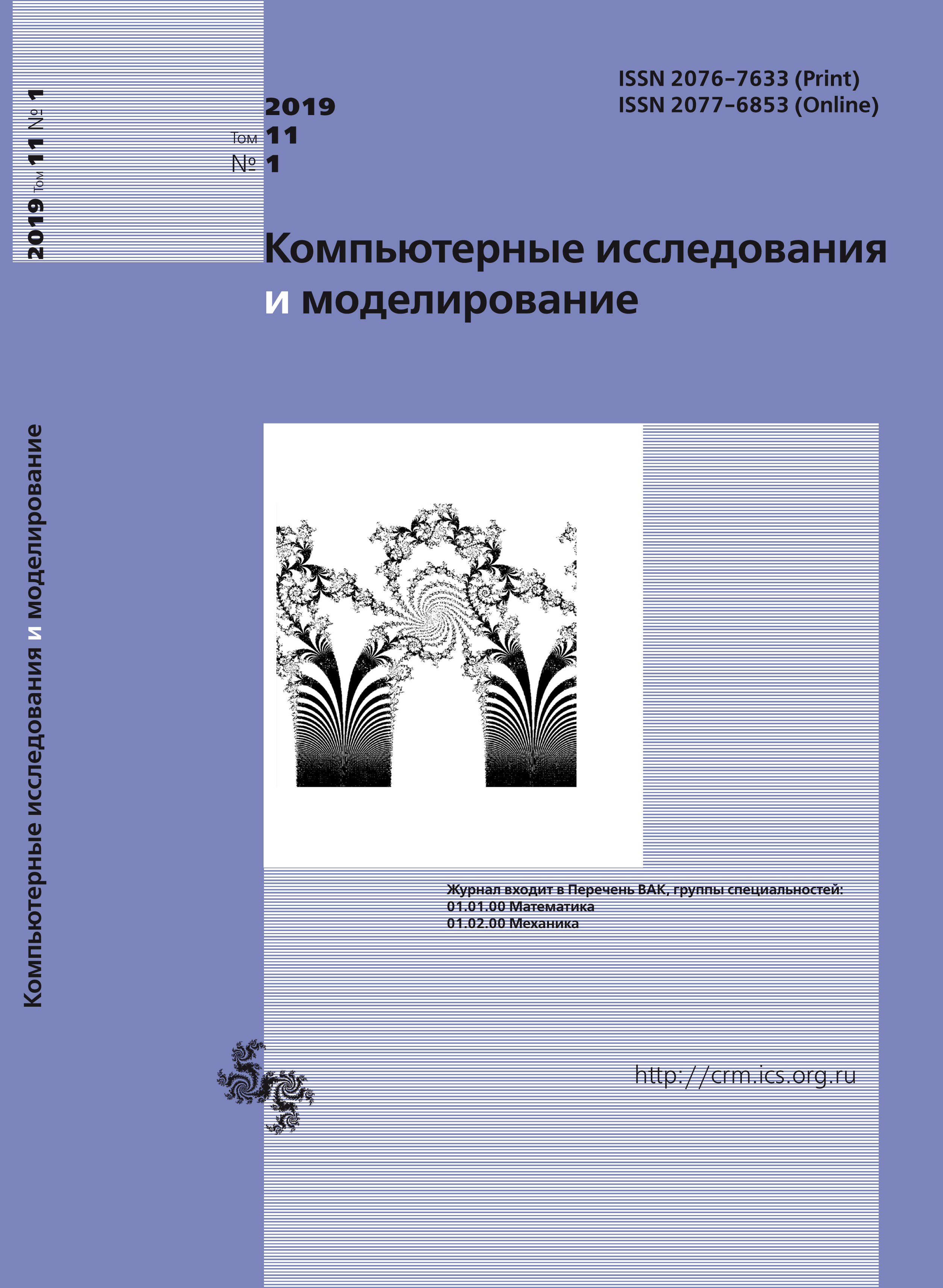All issues
- 2024 Vol. 16
- 2023 Vol. 15
- 2022 Vol. 14
- 2021 Vol. 13
- 2020 Vol. 12
- 2019 Vol. 11
- 2018 Vol. 10
- 2017 Vol. 9
- 2016 Vol. 8
- 2015 Vol. 7
- 2014 Vol. 6
- 2013 Vol. 5
- 2012 Vol. 4
- 2011 Vol. 3
- 2010 Vol. 2
- 2009 Vol. 1
Equilibrium states of the second kind of the Kuramoto – Sivashinsky equation with the homogeneous Neumann boundary conditions
The well-known evolutionary equation of mathematical physics, which in modern mathematical literature is called the Kuramoto – Sivashinsky equation, is considered. In this paper, this equation is studied in the original edition of the authors, where it was proposed, together with the homogeneous Neumann boundary conditions.
The question of the existence and stability of local attractors formed by spatially inhomogeneous solutions of the boundary value problem under study has been studied. This issue has become particularly relevant recently in connection with the simulation of the formation of nanostructures on the surface of semiconductors under the influence of an ion flux or laser radiation. The question of the existence and stability of second-order equilibrium states has been studied in two different ways. In the first of these, the Galerkin method was used. The second approach is based on using strictly grounded methods of the theory of dynamic systems with infinite-dimensional phase space: the method of integral manifolds, the theory of normal forms, asymptotic methods.
In the work, in general, the approach from the well-known work of D.Armbruster, D.Guckenheimer, F.Holmes is repeated, where the approach based on the application of the Galerkin method is used. The results of this analysis are substantially supplemented and developed. Using the capabilities of modern computers has helped significantly complement the analysis of this task. In particular, to find all the solutions in the fourand five-term Galerkin approximations, which for the studied boundary-value problem should be interpreted as equilibrium states of the second kind. An analysis of their stability in the sense of A. M. Lyapunov’s definition is also given.
In this paper, we compare the results obtained using the Galerkin method with the results of a bifurcation analysis of a boundary value problem based on the use of qualitative analysis methods for infinite-dimensional dynamic systems. Comparison of two variants of results showed some limited possibilities of using the Galerkin method.
Indexed in Scopus
Full-text version of the journal is also available on the web site of the scientific electronic library eLIBRARY.RU
The journal is included in the Russian Science Citation Index
The journal is included in the RSCI
International Interdisciplinary Conference "Mathematics. Computing. Education"







